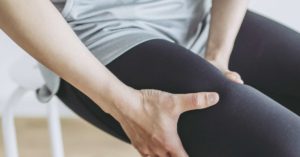Muscle Spasms
Ever have muscle spasms?

Spasmodic muscles or muscles that are “spasming” are simply sudden involuntary contractions of a particular muscle. It is commonly known as a muscle cramp.
Muscle cramps can be related to other medical conditions, though.
Most people have had a muscle cramp at some time in their life, and because of that, it’s easy to minimize the impact a spasmodic muscle can have. However, they can severely interfere with sleep and exercise… two essential ingredients for healthy living!
Ideally, muscle spasms should be a rare occurrence so if it is happening frequently then you need to figure out why.
Structural Causes
One step towards relieving spasming muscles is to check out any structural issues that may be occurring! In other words, look at what may be going on with the muscles and bones involved.
Inhibited muscles (muscles that aren’t functioning properly) put a great demand on the muscles that oppose them. Often the spasms are caused by some type of movement, perhaps by putting your body in a position beyond its capabilities, and sometimes the stress can be so great that a spasm can occur at rest.
Try this!
- Stand on one leg, with your hand pull your heel toward your buttock. (You can hold onto something for balance).
- Hold your body steady
- Slowly release your heel, but don’t let your heel drop down! Use your hamstrings to hold it there.
Did you get a cramp? If not, great! If you did, let me explain why.
You had enough mobility to move your heel to your buttock. (Yay!) But you did not have stability. Your hamstring was overloaded with work and that caused the spasm.
This is what happens when you get in an awkward position and get a cramp. It is fixed by doing more movements to build stability in all ranges of motion.
Nutritional Causes
The next step towards a cramp-free life is to take a glance at the nutrition that plays a role in healthy muscles!
Magnesium and potassium may help with cramps, but most often calcium is ultimately what’s needed. This is especially true of cramps in the calves at night.
Simple, right? Not quite.
There must be an adequate amount of hydrochloric acid in the body to help ABSORB the calcium!
Vitamin D is also needed to pull calcium from the GI tract (and other tissues) to put into the blood.
Finally, healthy fats help to get calcium into the muscles.
Applied kinesiology techniques can help determine if you need calcium, hydrochloric acid, vitamin D, more fats, or all of the above.
FUN FACT: Calcium is often very helpful with menstrual cramps. One tablet of calcium lactate every hour at the first sign of menstrual cramps can help reduce the painful side of the period!
Conclusion
Applied Kinesiology can discover what muscles need manual therapy to balance dysfunction.
Additionally, the proper nutrients can be found to address any nutritional needs a person may have. This is a good example of the whole person approach in action. It is also a great example of how healthy living can make problems go away.
Think about what we outlined.
Getting a variety of movements in your life, eating healthy fats, vitamin D from sunshine (ideally), and addressing small symptoms before they lead to something bigger.
That’s healthy pain-free living in action!
 True Health | Charleston, WV
True Health | Charleston, WV
Recent Comments